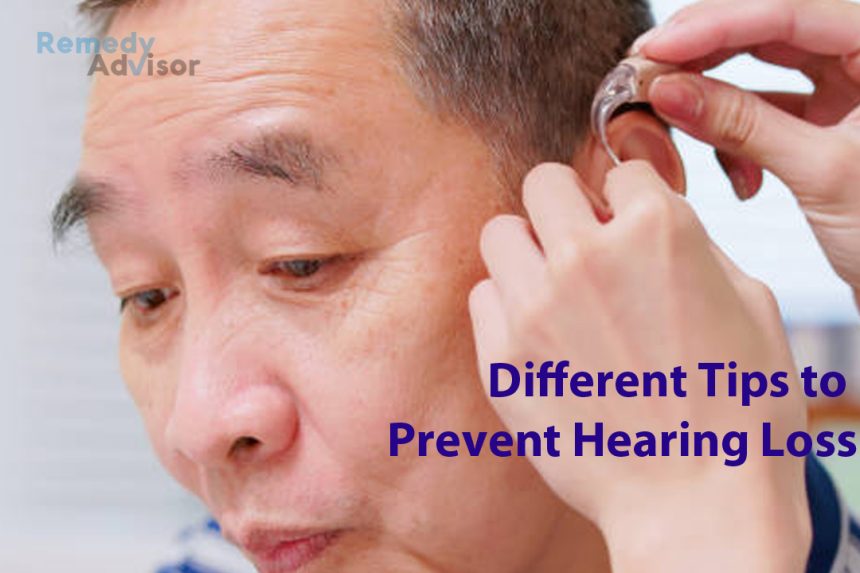We tend to take our hearing for granted until we start to lose it. And once hearing loss occurs, it’s usually irreversible.
The gradual loss of hearing that occurs as we age is called presbycusis. It’s very common. By age 60, most people have a slight weakness in their ability to hear sounds above 4,000 hertz (cycles a second). Unfortunately, that’s the range in which speech falls.
The first sign of presbycusis is usually an inability to make out consonants to distinguish between “sit” and “spit,” for example, or “pants” and “dance.”
Irreversible hearing loss can also be the result of high fever, measles, scarlet fever and certain other diseases or, rarely, a side effect of surgical anesthesia.
A third form of hearing loss occurs when a small bone in the middle ear called the stapes loses its ability to transmit sound to the auditory nerve.
This hereditary condition, otosclerosis, afflicts 3% of the population, mostly women. It may start at puberty, but typically comes on in the 20s, 30s or 40s.
Protecting your hearing
You can’t do much about your genes or your age, but you can protect yourself against the major enemy of hearing exposure to loud noise.
Sustained noise above 85 decibels (the loudness of a shout or a crying infant) damages the nerve endings that transmit sound signals to the brain. Similar to presbycusis, the speech frequencies around 4,000 hertz are the first to go. Then higher and lower frequencies are affected.
A 30-year-old who has spent years using a jackhammer without hearing protection may have the hearing of someone 50 years older.
You run a similar risk if your nights are spent at a disco, club or bar where the music is deafening. Or if you keep the volume of your Walkman too high.
Self-defense: Do everything necessary to avoid prolonged exposure to loud noise. If the noise level at a club causes pain or ringing in the ears, leave.
If sustained noise is unavoidable at work, for example use a noise-blocking headset or foam rubber or molded wax earplugs. For maximum protection, wear a headset in addition to earplugs.
When buying ear protection, look for a noise-reduction rating (NRR) of 15 or higher. Putting cotton in your ears is not very effective. Cotton has an NRR of only five to 10.
What about brief exposures to loud noise? You probably won’t suffer any hearing loss from the occasional fire engine roaring past (though it is a good idea to plug your ears with your fingers). But even one very loud burst a gunshot, for example can cause permanent trouble.
If you experience ringing in the ears and your hearing seems less acute after a loud noise, and it’s not back to normal in a day or two, consult a hearing specialist.
Chronic ear infections
A bad cold or flu often causes fluid to build up in the ear. If fluid accumulation becomes chronic, delicate structures in the middle ear can be permanently damaged.
If your stuffiness persists for longer than a month, or if ear infections recur frequently, your doctor may prescribe a powerful decongestant or insert a ventilation tube through your eardrum.
To prevent injury to your eardrum, avoid flying when you have fluid in your ears. If your trip can’t be postponed, ask your doctor for a good decongestant. During the flight, gently pop your ears by swallowing hard.
Coping with hearing loss
Your doctor will probably recommend a hearing test to pinpoint the extent and cause of your problem. It’s rare, but hearing loss can stem from a tumor of the brain or cranial nerve. It’s especially important to rule out a tumor if your hearing loss is more pronounced on one side.
A hearing test is conducted in a noiseless, insulated testing booth. It tests both the level (speech-reception threshold) and the clarity (word discrimination score) of hearing. Some hospitals and hearing aid makers offer a “telephone hearing test,” but such tests aren’t very accurate.
Does your hearing loss stem from a problem in the transmission of sound through the inner ear? From damage to the auditory nerve? What frequencies are affected? The hearing test should answer these questions.
Some conditions can be corrected surgically. If you have otosclerosis, for example, a simple outpatient procedure to insert a tiny “piston” in the inner ear restores normal hearing 90% of the time.
If you need a hearing aid, get an audiologist’s help in choosing the most appropriate model. Today’s devices which must be painstakingly calibrated are different from those of decades past. Most are small enough to fit inside or behind the ears or on eyeglass frames. And most have electronic filters and precise volume controls that let you amplify just the frequencies that give you trouble.
Some state-of-the-art devices are programmable. You can preset them for listening comfortably to conversation or music, indoors or outdoors. Cost: $400 to $2,000. Caution: Never buy a hearing aid via mailorder or telephone.
Cochlear implants
The latest treatment for hearing loss is the cochlear implant. Implanted in a bone next to the ear, this miniature computer turns sound into electromagnetic energy, which is fed into the inner ear to stimulate the auditory nerve.
Cochlear implants are appropriate only for individuals with profound hearing loss in both ears that cannot be helped by a hearing aid.
Though cochlear implants can boost the hearing of otherwise deaf people, they cannot provide the same sound quality of a good hearing aid.







